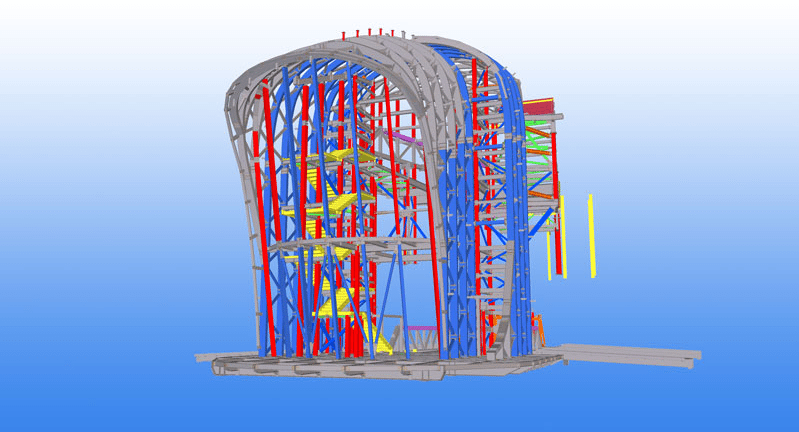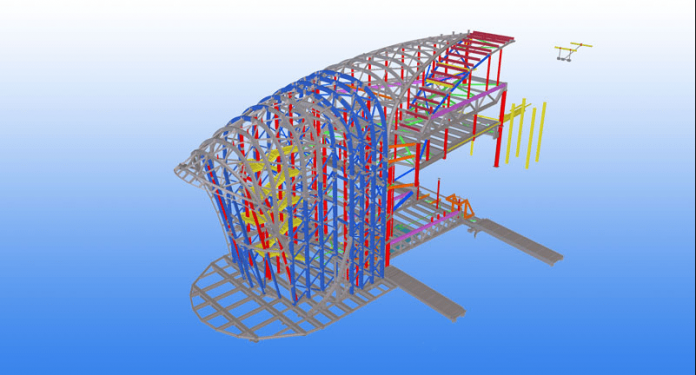Tekla Structures can allow a steel and concrete structure to be formed within the same 3D model, reducing costs and improving efficiencies
Tekla Structures from Trimble allows a steel and concrete structure to be formed within the same 3D model, which significantly reduces the amount of re-work and time spent in the drawing office, as the design moves from one discipline to the other. It minimises costly surprises and waste, improves efficiency and quality, and ensures that the correct, error-free elements are delivered in the right place, at the right time.
In fact, by incorporating Tekla Structures within a project, it will streamline the entire workflow, as it integrates design and detailing with fabrication and project management. Steelwork contractor SCH Site Services experienced these benefits recently when it used the software to detail the £11.5m Ogden Centre for Fundamental Physics at Durham University.
Innovative results for new Durham University building achieved with Tekla Structures
Tekla Structures allowed SCH to overcome confidently, the significant challenges created by the building’s complex geometry and innovative design. The proposed steelwork design on each elevation was detailed at three different axis and Tekla software coped with this requirement with ease.
Matthew Reed, Project Draughtsman at SCH Site Services, said: “Comprising 50 tonnes of complex steelwork and 360 assemblies that were split into nine individual loads, the project was a challenge for us in more ways than one. As such, a primary preliminary IFC, modelled by the project’s structural engineers, was a valuable starting point for our work on the Ogden Centre for Fundamental Physics. This was then imported into Tekla Structures, converted and detailed to match Construction Issue details and survey details. Tekla Structures is our chosen software for BIM and structural steel fabrication management.”
High-quality standards, reduced lead times and even hours spent on site
Another project that required the assistance of Tekla Structures was the new entrance to Leeds’ train station, which was constructed by the William Hare Group. It was used to visualise the complex project in a 3D model format, which helped the steel and structural engineering company to attain high-quality standards, reduce lead times and even reduce hours spent on site.
Paul Lovatt, Engineering Manager, at William Hare Group said: “We were contracted by Carillion for the engineering, fabrication and erection of the entrance – a complicated structure. With this in mind, we decided to use Tekla Structures as it can create accurate, reliable and detailed 3D models, which can capture all of the project information, help us identify construction clashes and overcome any potential problems on site – to ensure the project is completed on time.

“With complex geometry and the fact that we had to join the new steel framework to the existing structure, close coordination with the architect and the engineer was essential to achieve the correct set-out of the steel. Therefore, the software played an imperative role in the creation of the entrance; it allowed us to visualise the project at conception right through to the construction itself.”
Tekla Structures is the ideal software for projects that require accurate forecasting and project understanding for everyone involved – as both teams working on the prestigious Ogden Centre for Fundamental Physics and Leeds’ train station entrance projects experienced.
For more information about all Tekla Solutions please visit www.tekla.com/uk/soutions
Marian Thomasson
Marketing Manager
Trimble
marian.thomasson@trimble.com
Please note: this is a commercial profile














